
蛋白石的种类:蛋白石的种类、产地、颜色等等的完整列表!
 蛋白石看起来像是蕴藏着星系,但你知道蛋白石的种类繁多吗?蛋白石最广为人知的身份是十月生辰石,它是大自然令人着迷的奇迹,拥有无数的品种!
蛋白石看起来像是蕴藏着星系,但你知道蛋白石的种类繁多吗?蛋白石最广为人知的身份是十月生辰石,它是大自然令人着迷的奇迹,拥有无数的品种!
说到蛋白石的种类和含义,蛋白石通常象征着希望和纯真,但蛋白石的含义会根据蛋白石的种类而有所不同。
那么,蛋白石有哪些类型呢?
今天,我们将通过图片,按类别、产地和颜色介绍各种类型的蛋白石。在开始之前,让我们先来了解一下蛋白石的分类方法。
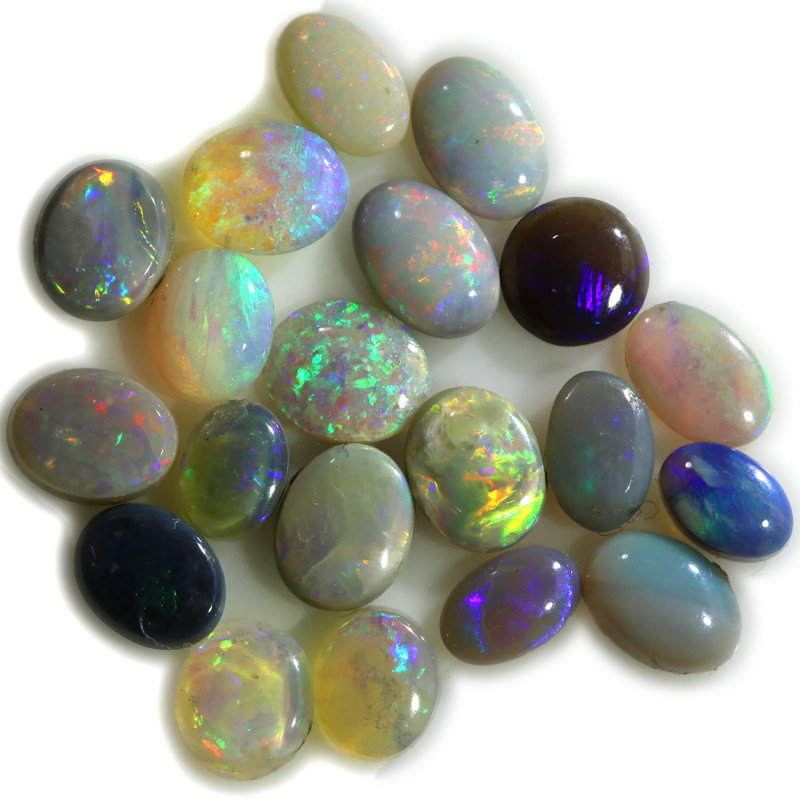
蛋白石有哪些类型?
世界上存在数百种蛋白石,但首先要了解的区别是普通蛋白石和珍贵蛋白石。珍贵蛋白石会呈现出虹彩变彩,而普通蛋白石则没有。
蛋白石的主要分类方法是根据其体色。专业术语是体色调,但也使用“基调”或“背景色”。
在珍贵蛋白石中,体色指的是宝石背景的相对深浅。而普通蛋白石的体色则仅仅取决于宝石的整体颜色。
其他分类依据包括蛋白石的产地、内含物和形成方式。在深入探讨这些之前,我们先来看看人们最常购买的三种不同类型的蛋白石是什么?
最受欢迎的蛋白石类型
尽管蛋白石的种类繁多,但有三种蛋白石类型占据主导地位:白色/浅色蛋白石、灰色/深色蛋白石和黑色蛋白石。
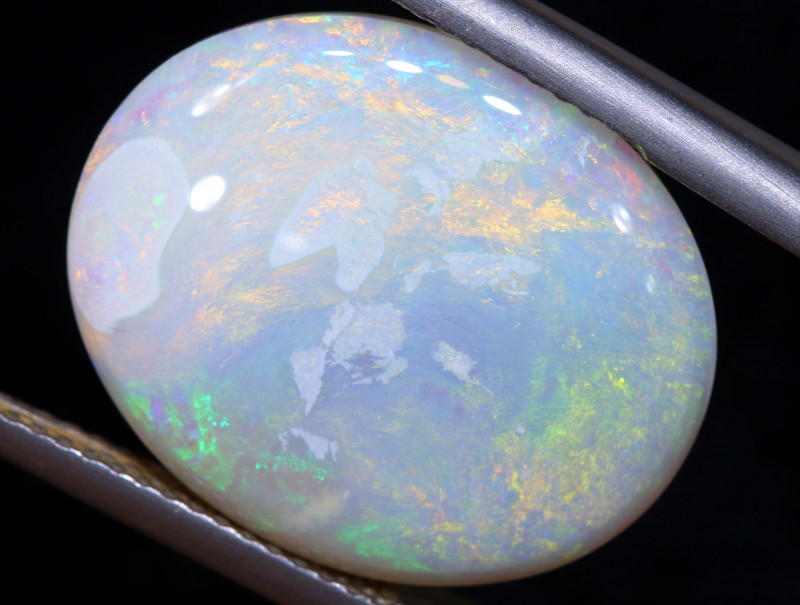
白色/浅蛋白石
浅色或白色蛋白石指的是任何体色为N7-N9的蛋白石,可以是普通蛋白石,也可以是珍贵蛋白石。浅色蛋白石的颜色范围从无色到浅灰色,而白色蛋白石的体色则为白色到淡灰色。这些蛋白石可以是透明的,也可以是半透明的,但大多数都带有乳白色调。
白色是最常见的蛋白石颜色,也是储量最丰富的珍贵蛋白石类型。澳大利亚的库伯佩迪矿因盛产白色珍贵蛋白石而赢得了“世界蛋白石之都”的美誉。

灰蛋白石/深色蛋白石
灰蛋白石或暗蛋白石介于白色和黑色之间,色相为N5-N6。这类蛋白石也被称为“半黑蛋白石”,其色相为中等灰色,但又不够黑,无法称之为黑蛋白石。大多数暗蛋白石产自澳大利亚的闪电岭(Lightning Ridge)或明塔比(Mintabie)。这种蛋白石不如白蛋白石常见,但其变彩效应更为明亮。
说到深色蛋白石,最稀有的蛋白石类型是什么?
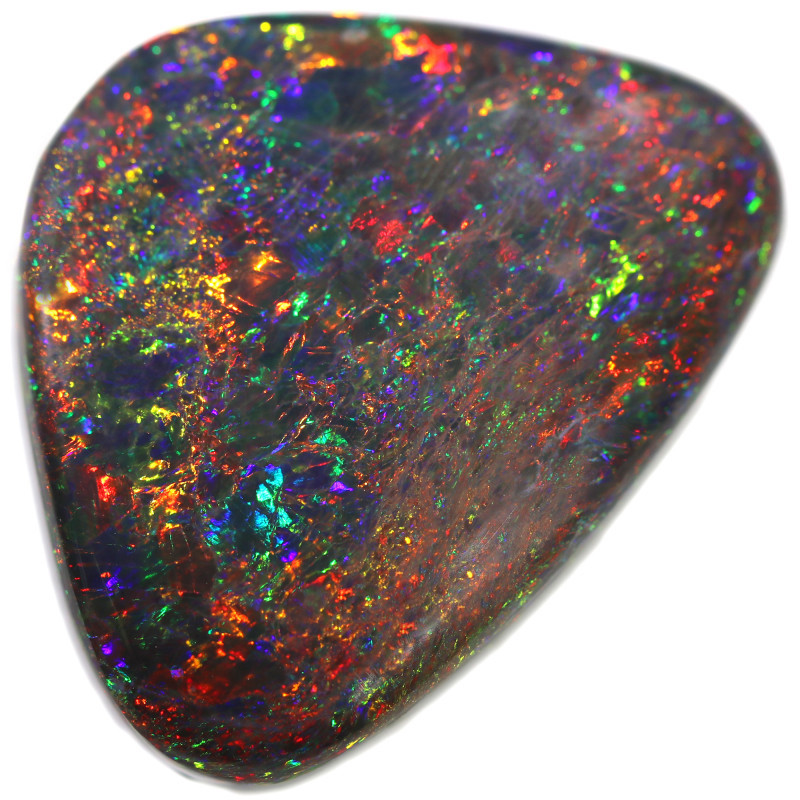
黑欧泊
黑蛋白石是最稀有的蛋白石品种,其特征是体色呈深灰色至黑色,色级为N1-N4。这些蛋白石可以是透明的黑色水晶蛋白石,也可以是不透明的,但既有普通的黑蛋白石,也有珍贵的黑蛋白石。
虽然稀有,但大多数宝石级黑欧泊产自澳大利亚的闪电岭。黑欧泊是所有欧泊中变彩效应最耀眼的。欧泊还有哪些颜色呢?
按体色分类的蛋白石
除了白色、灰色和黑色之外,蛋白石还有粉色、紫色(紫罗兰色)、蓝色、绿色、无色和火红色等多种色调。让我们一起来探索每一种颜色吧!

粉色蛋白石
粉色蛋白石是一种常见的蛋白石,颜色从浅粉色到泡泡糖粉色不等,但也可能出现白色、黄色、桃色、淡紫色和黑色等其他颜色。这种蛋白石通常含有内含物,形成深色条纹或色带。
粉色蛋白石产自澳大利亚、墨西哥和美国,但秘鲁是产量最高的产地。秘鲁粉色蛋白石呈乳白色,颜色鲜艳均匀,尤其是“安第斯粉色蛋白石”。
西澳大利亚的粉红色蛋白石实际上是蛋白石化的放射虫硅质岩,而且通常含有大量内含物(意味着它们含有微量的其他矿物或碎屑),从而形成白色、棕色或黑色的图案。
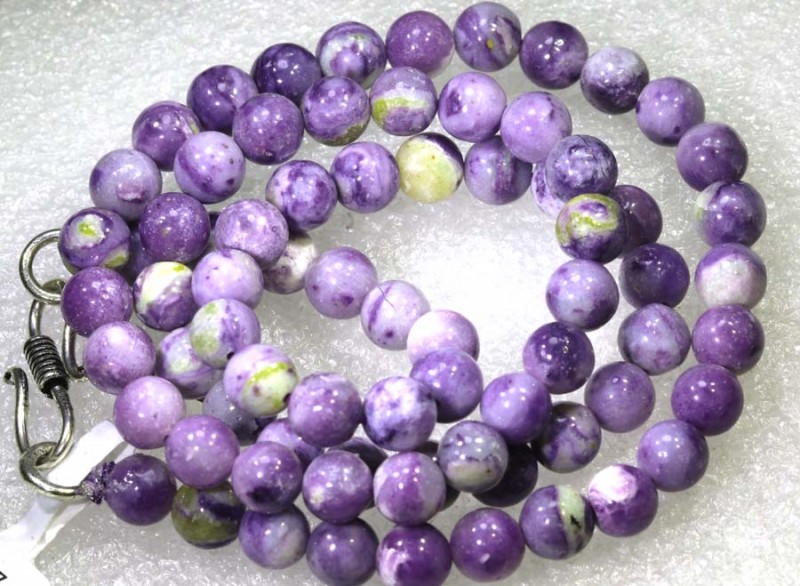
紫罗兰蛋白石
莫拉多蛋白石,又称“紫蛋白石”或“皇家蛋白石”,是一种原产于墨西哥的紫色常见蛋白石。其颜色范围从淡紫色到紫罗兰色,通常呈乳白色且不透明。蒂芙尼蛋白石也呈现紫色色调,它是一种产自美国犹他州的蛋白石萤石集合体,因含有氟气而呈现紫色。
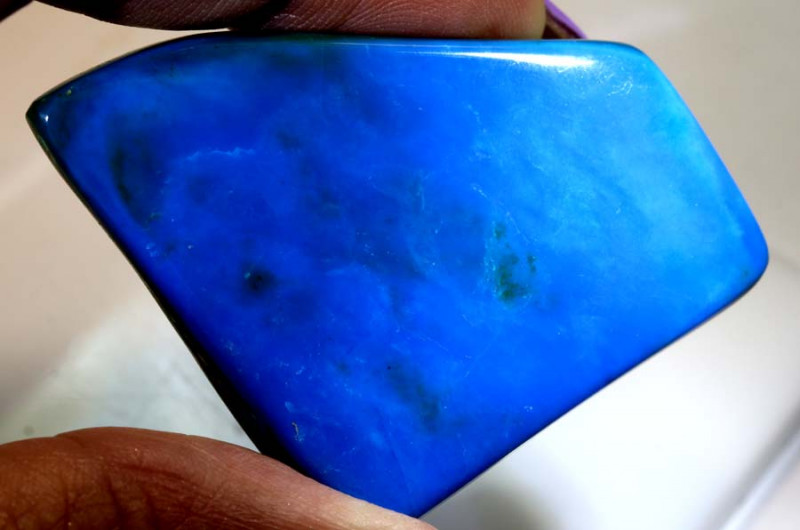
蓝色蛋白石
蓝色蛋白石可分为普通蓝蛋白石和珍贵蓝蛋白石,颜色从深蓝绿色到浅天蓝色不等。秘鲁主要出产这种蓝蛋白石,“蓝色蛋白石”通常指的是秘鲁的普通蓝蛋白石。秘鲁也出产珍贵蓝蛋白石,有些宝石在小范围内具有变彩效应。
巴西与秘鲁一样,出产一种名为帕拉伊巴蛋白石的珍稀蓝绿色蛋白石。其他蓝色蛋白石矿藏位于斯洛伐克、印度尼西亚和美国,其中包括俄勒冈州出产的淡蓝色奥怀伊蛋白石。
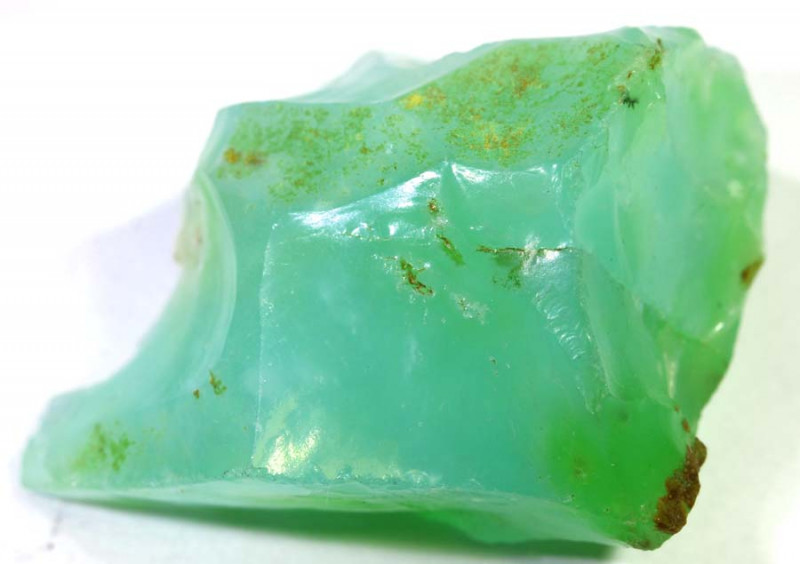
绿蛋白石
世界各地常见的蛋白石之一是绿蛋白石,其颜色呈现出引人注目的祖母绿、黄绿色或柔和的翡翠绿。绿蛋白石产于六大洲,其中最著名的矿区位于澳大利亚、巴西、秘鲁、墨西哥和美国。
天然蛋白石是另一种常见的绿色蛋白石,尽管它也呈现出紫色色调。蛋白石通常呈苔藓绿色,带有深色树枝状包裹体,并可能呈现猫眼效应(俗称“猫眼”效应)。大多数蛋白石产自非洲,但埃塞俄比亚的猫眼蛋白石通常呈蜜色或黄色。
另一种绿色蛋白石是坦桑尼亚绿松石。这种蛋白石含有镍,因此呈现出闪亮的霓虹蓝绿色。绿松石呈半透明至透明状,有些人称之为“非洲玉”。
接下来,哪种颜色的蛋白石最有价值?答案是红色蛋白石,它同时也是火蛋白石中最有价值的颜色。
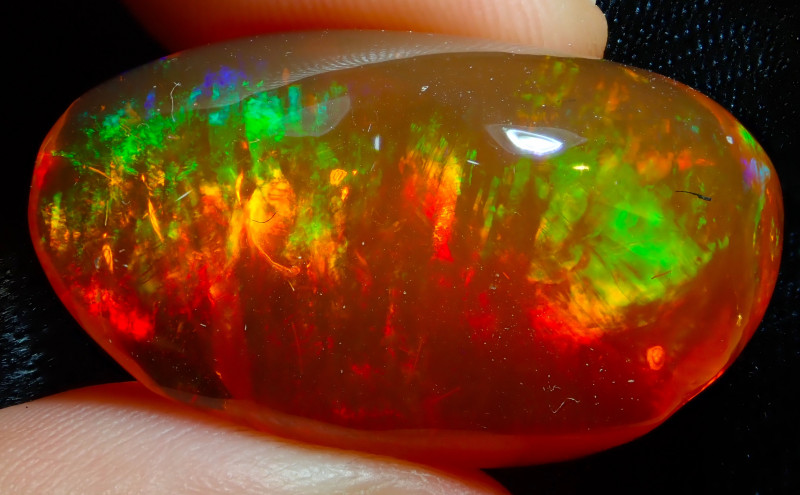
火欧泊
你是否钟爱绚丽夺目的景象?火欧泊正是你梦寐以求的宝石。火欧泊的体色有红色、橙色、黄色和棕色,品质也分为普通级和宝石级。这些宝石原产于墨西哥,因此常被称为墨西哥火欧泊,但它们也产自澳大利亚和埃塞俄比亚。
火欧泊与大多数欧泊不同,它呈半透明至透明状(而非不透明),并且形成于火山内部。墨西哥出产的大多数火欧泊都是普通欧泊,但埃塞俄比亚出产的火欧泊则十分珍贵,带有霓虹紫罗兰色和绿色的闪光。
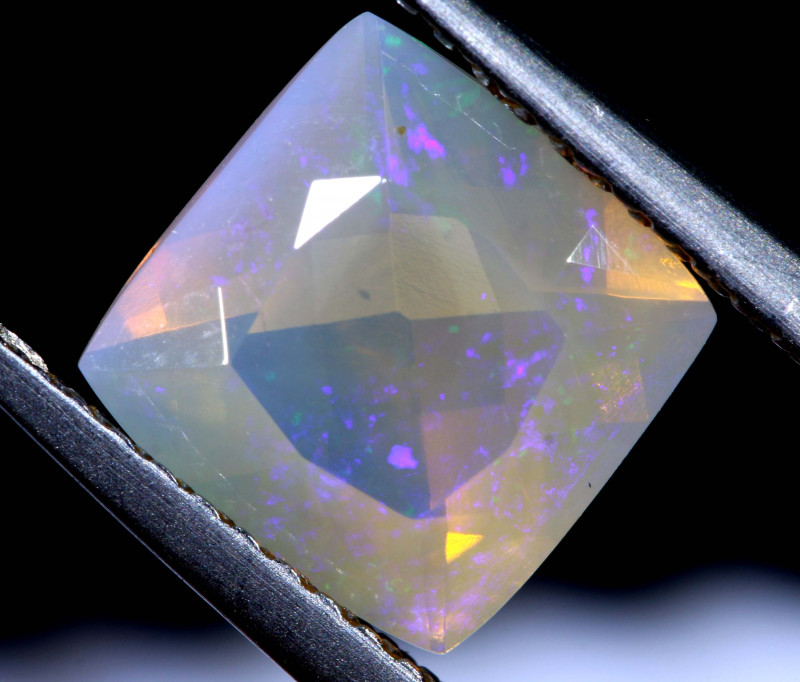
无色蛋白石
除了彩虹色之外,我们还有无色蛋白石。虽然它们不像前面提到的蛋白石那样色彩斑斓,但它们各自都具有独特的性质。
水晶蛋白石:任何无色透明、无乳白色且体色等级为 N7-N8 的珍贵蛋白石。
果冻蛋白石/水蛋白石:透明、无色的珍贵蛋白石,比水晶蛋白石略深,呈胶状外观,有时内部有变彩,并带有蓝色或金色的光泽。
Contraluz 蛋白石:从西班牙语翻译过来就是“逆光”,无色珍贵的蛋白石在从背面照射时,会在蛋白石内部呈现出变彩效应。
接下来进入下一类,我们来看看与其他材料形成而成的蛋白石类型。
蛋白石内含物及品种
大多数蛋白石的形成过程相似,但当蛋白石在形成过程中与附近的矿物和颗粒相互作用时,就会产生一种全新的蛋白石类型。蛋白石与其他物质的融合可能发生在外部,蛋白石围绕另一种矿物生长;也可能发生在内部,包裹体被困在蛋白石内部。
内含物是指宝石形成过程中包裹在宝石内部的任何物质。虽然宝石表面的大多数物质被称为“瑕疵”,但内部内含物有时也会到达表面。
如果你想知道哪种蛋白石最好,很多人会说我们名单上的第一种矿物组合蛋白石品种:砾石蛋白石!
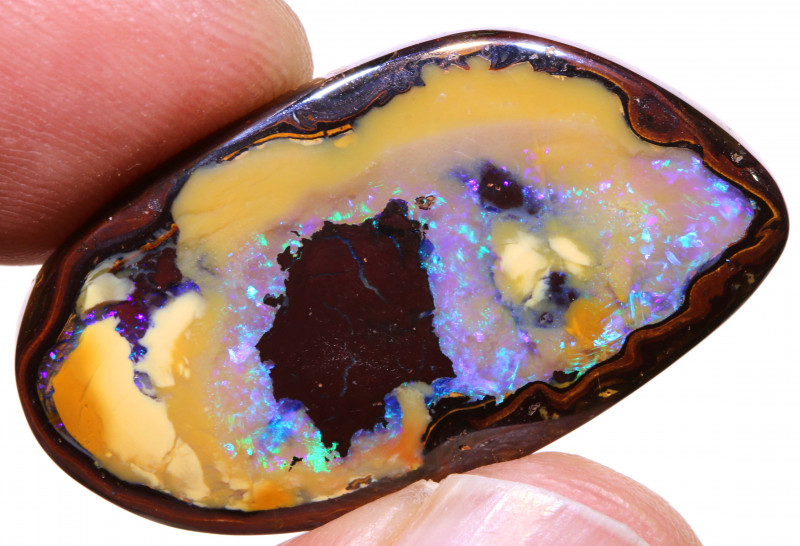
博尔德蛋白石
砾石蛋白石是珍贵蛋白石与母岩(通常是铁矿石或砂岩)的结合体,尽管有些含有植物或化石木而不是岩石。
珍贵的蛋白石以斑块和/或薄层状的形式附着或环绕在母岩中。这是由于预先形成的蛋白石硅水在蛋白石硬化之前渗入岩石缝隙所致。
澳大利亚昆士兰州是最早发现砾石蛋白石的地方,至今仍是其主要产地之一。其他出产砾石蛋白石的地区包括巴西和加拿大。
博尔德蛋白石有几个亚型:
巨砾蛋白石木化石:也称为化石木替代蛋白石,这种蛋白石含有附着在母岩上的蛋白石化木材。
安达穆卡巨砾蛋白石:这些稀有的蛋白石产自澳大利亚安达穆卡,其母岩为石英岩,有时被称为“彩绘女士”。
蛋白石坚果:产于澳大利亚的约瓦(Yowah)或科罗伊特(Koroit)蛋白石矿区,蛋白石坚果是圆形的砾状蛋白石,形似树坚果,并具有独特的条纹。这些矿区的砾状蛋白石通常带有巧克力棕色的铁矿石底衬,而其他矿区出产的蛋白石则带有浅棕色底衬。
巨石管状水晶蛋白石:这种类型的水晶蛋白石形成于母岩内部的空心或管状圆柱体中。
坎特拉蛋白石:这种蛋白石由粉红色流纹岩中的火蛋白石或珍贵蛋白石组成。
砾石蛋白石也可以是砾石基质蛋白石,这种亚型与我们的下一个品种——基质蛋白石——混合在一起!
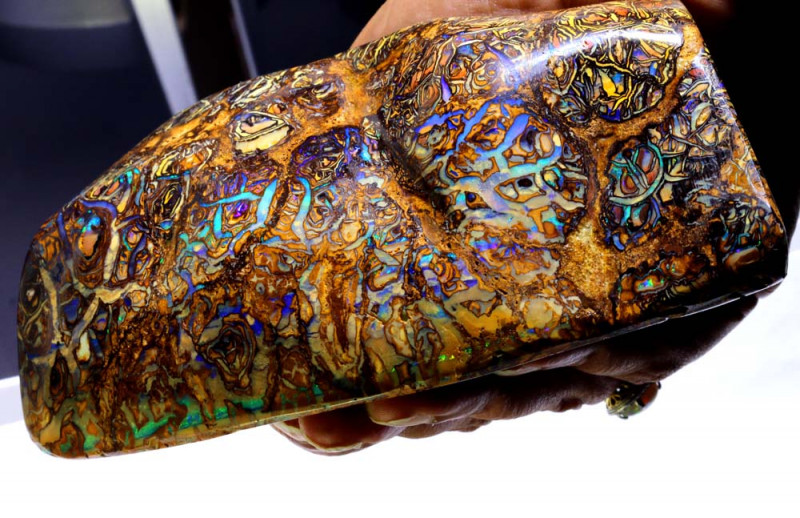
基质蛋白石
与砾石蛋白石类似,基质蛋白石也含有珍贵蛋白石及其母岩。然而,在基质蛋白石中,珍贵蛋白石填充在母岩颗粒之间的孔隙或孔隙中,从而在整块石头上形成更加均匀的变彩效果,而不是像砾石蛋白石那样呈现出明显的区域性变彩。
基质蛋白石产自墨西哥、洪都拉斯和澳大利亚。在澳大利亚,安达莫卡基质蛋白石具有多孔性,因此很容易(而且经常) 通过化学处理来改善其颜色。洪都拉斯主要出产基质蛋白石,其不透明品种通常由深色母岩上点缀着色彩鲜艳的蛋白石组成。
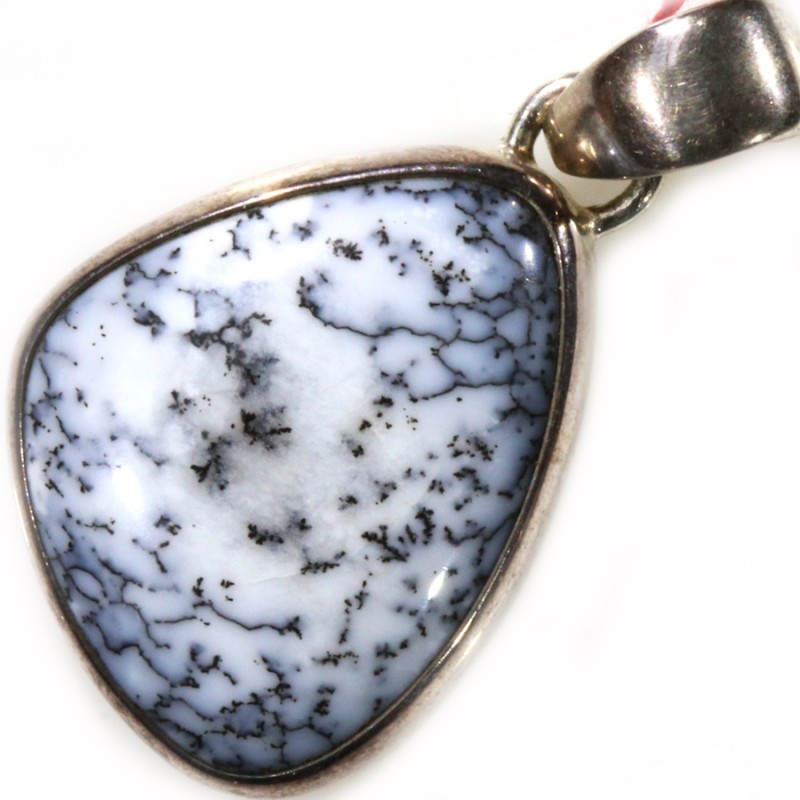
树枝状蛋白石
树枝状蛋白石,又称“苔藓蛋白石”,是一种白色或黄褐色的普通蛋白石,其特征是含有绿色或棕色的苔藓状(树枝状)内含物。这些内含物通常由锰或铁构成,形成独特的图案,包括那些让人联想起“风景蛋白石”中森林景观的图案。
树枝状蛋白石的含水量可接近30%,因此被归类为“软宝石”。这类蛋白石大多产自澳大利亚、墨西哥或美国,但在中美洲、亚洲和俄罗斯也能找到。
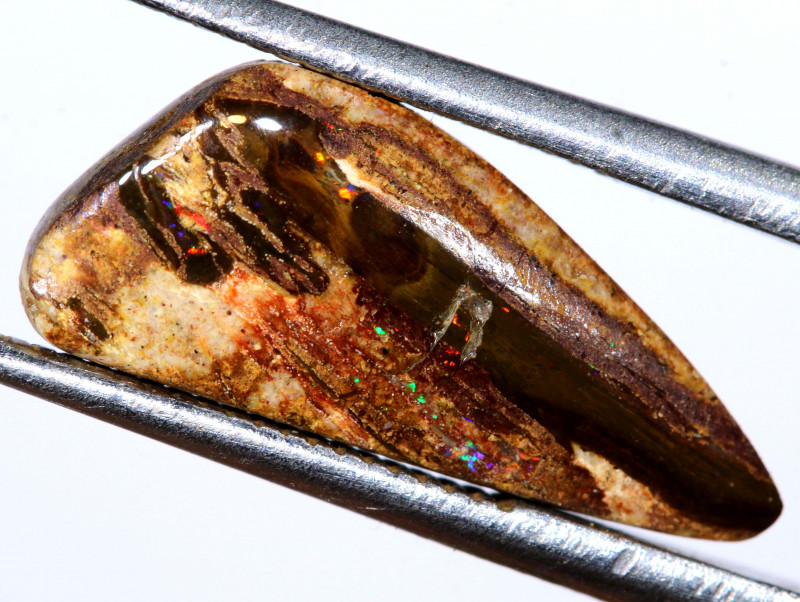
蛋白石木
蛋白石化木是一种含有蛋白石的硅化木。硅化木是指部分植物组织被石头(在本例中为蛋白石)取代的化石木材或植物。
这些天然美景的形成源于硅酸盐水对埋藏在地下的木质组织的保护作用。这种自然现象发生在哪里呢?蛋白石化木通常形成于被火山灰覆盖的森林中。美国、印度尼西亚、俄罗斯、墨西哥和巴西都有著名的蛋白石化木矿床。
从自然形成的组合开始,接下来让我们看看人类是如何将蛋白石与其他材料结合起来的。
复合蛋白石
大多数蛋白石都是纯蛋白石,由100%的蛋白石组成。例如,天然蛋白石如果与其他非蛋白石材料混合,就不是纯蛋白石。然而,更显著的区别在于纯蛋白石和复合蛋白石。复合蛋白石或“合成”蛋白石是经过珠宝商加工处理的,包括双层蛋白石、三层蛋白石和马赛克/碎屑蛋白石。为什么要对如此天然完美的蛋白石进行加工呢?复合蛋白石价格实惠,是天然蛋白石的绝佳替代品。
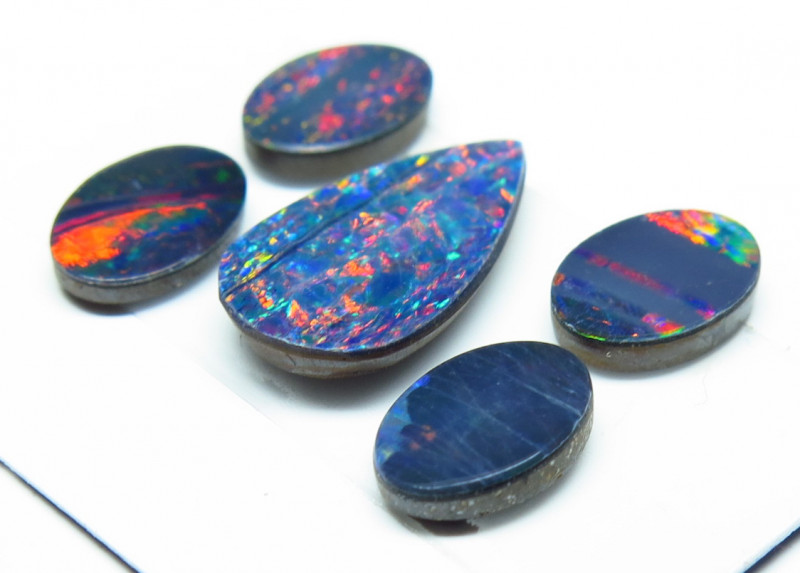
双色蛋白石
双层蛋白石是一种复合蛋白石,其结构是在基底层上粘合一层薄薄的珍贵蛋白石。基底层可以是铁矿石(用来模仿砾石蛋白石)、其他矿物或塑料。通常,人们会将珍贵的浅色蛋白石粘合在黑色基底上,以模仿珍贵的黑色蛋白石。
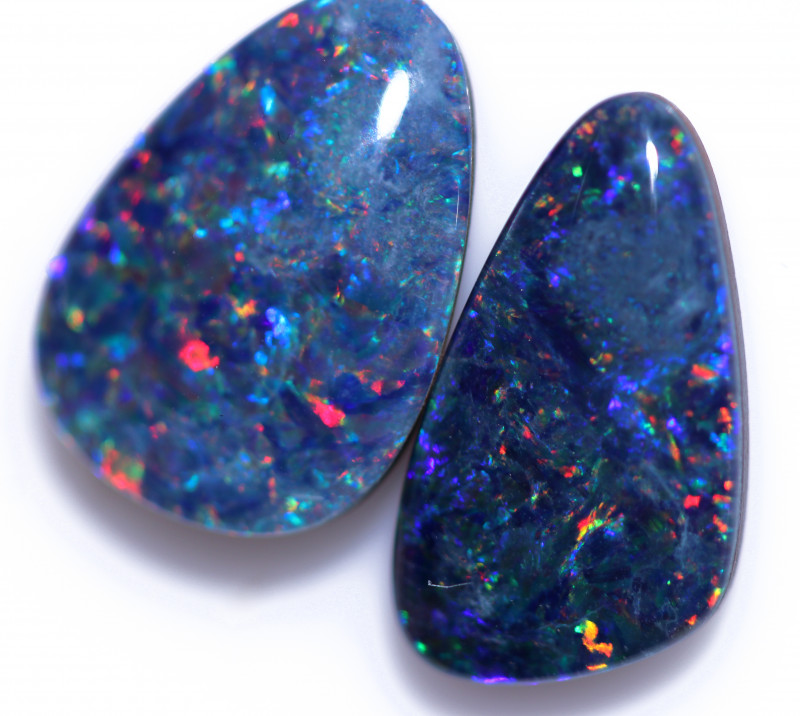
三重蛋白石
三层蛋白石本质上是在双层蛋白石上粘贴了一个保护性的水晶罩。这个水晶罩可以是玻璃、石英或塑料材质,还能增强蛋白石的变彩效应。由于三层蛋白石使用的蛋白石较少,因此通常比双层蛋白石便宜。

马赛克和碎蛋白石
马赛克蛋白石和碎蛋白石是两种复合蛋白石,都是将蛋白石碎片重新组合成新的形状。马赛克蛋白石是将扁平或形状不规则的小块蛋白石像彩色玻璃一样粘贴在深色底座上。而碎蛋白石则是将蛋白石碎片与树脂混合,密封固化成所需的形状。
珠宝商要制作复合蛋白石,矿工首先得找到原石。蛋白石种类繁多,那么世界上哪些地方都出产蛋白石呢?
地质因素和地形因地区而异,是影响蛋白石类型的最重要因素。塑造蛋白石的土壤、大气和矿物质在全球范围内各不相同,让我们一起环游世界吧!
按来源分类的蛋白石
世界各地的蛋白石矿往往都专注于开采特定类型的蛋白石。快来加入我们,一起探访世界各地的蛋白石矿,了解它们的特色吧!
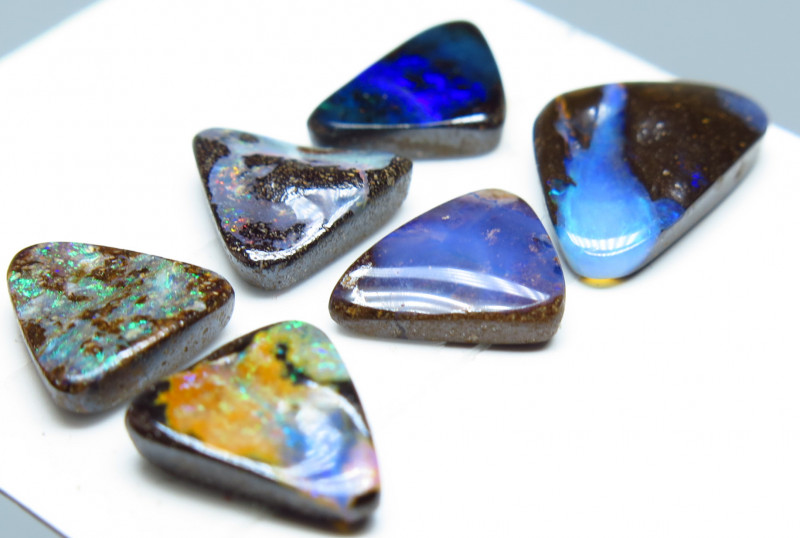
澳大利亚蛋白石
澳大利亚是世界上最大的蛋白石供应国,这已不是什么秘密。这是因为澳大利亚拥有许多重要的矿区,每个矿区都以出产不同类型的澳大利亚蛋白石而闻名:
安达莫卡:以出产明亮的晶体缝隙蛋白石而闻名。
库伯佩迪:白蛋白石的主要产地。
闪电岭:按价值计算最大的蛋白石生产商,以高品质黑蛋白石而闻名。
Tintenbar :产出火山深色果冻蛋白石。
白崖蛋白石:以白色珍贵的层状蛋白石以及蛋白石化的菠萝化石而闻名。
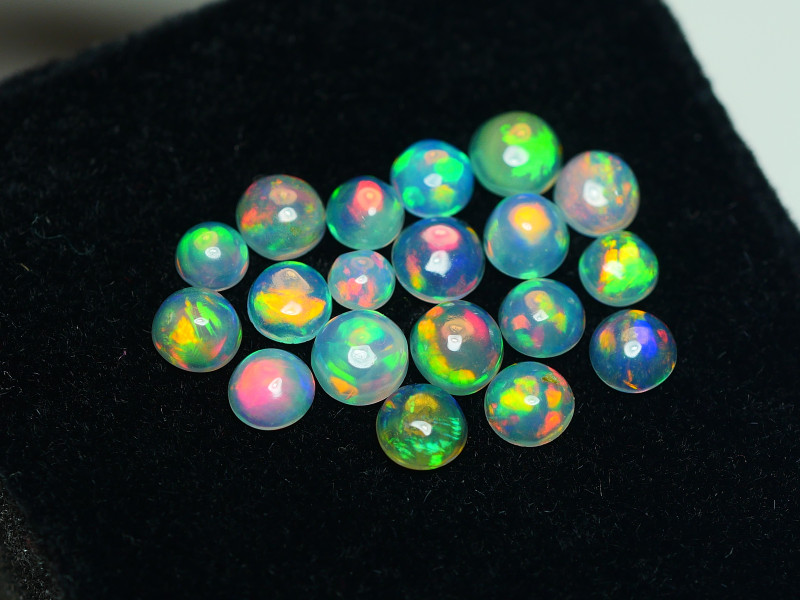
非洲蛋白石
近几十年来,埃塞俄比亚发现了多处蛋白石矿藏,使非洲成为蛋白石版图上的重要产地。
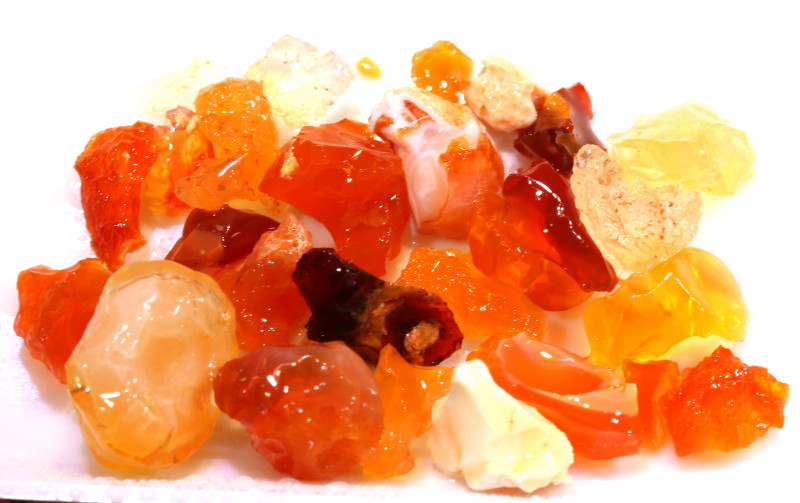
中南美洲蛋白石
墨西哥蛋白石:墨西哥以火蛋白石而闻名,但也出产马德拉蛋白石、反光蛋白石、坎特拉巨砾蛋白石以及世界上一些最好的水蛋白石。
巴西蛋白石:以其晶莹剔透、带有柔和色彩闪光且含水量低而闻名。
秘鲁蛋白石:以蓝色或粉色秘鲁蛋白石而闻名,也是该国的国石。
洪都拉斯蛋白石:以拥有世界上最古老的蛋白石矿和出产独特的砾石蛋白石和基质蛋白石而闻名。
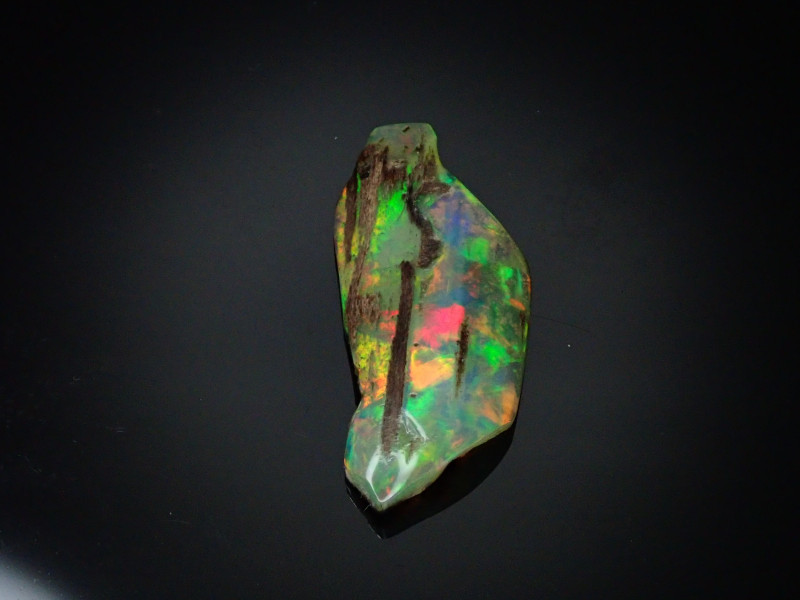
其他地点
印尼蛋白石:以天然蛋白石和蛋白石化木材而闻名。
美国蛋白石:主要产自爱达荷州、犹他州和维尔京谷,著名的美国品种包括奥怀伊蛋白石、“雷蛋”蛋白石、彩虹蛋白石、树枝状蛋白石、蛋白石木、透明蛋白石、带状蛋白石、路易斯安那沙蛋白石和犹他培根蛋白石。
斯洛伐克(或匈牙利)蛋白石:独特的白色珍贵蛋白石,内部带有蓝色和橙色闪光。
其他类型的蛋白石
有些蛋白石很难归类,但也不应该被忽视!
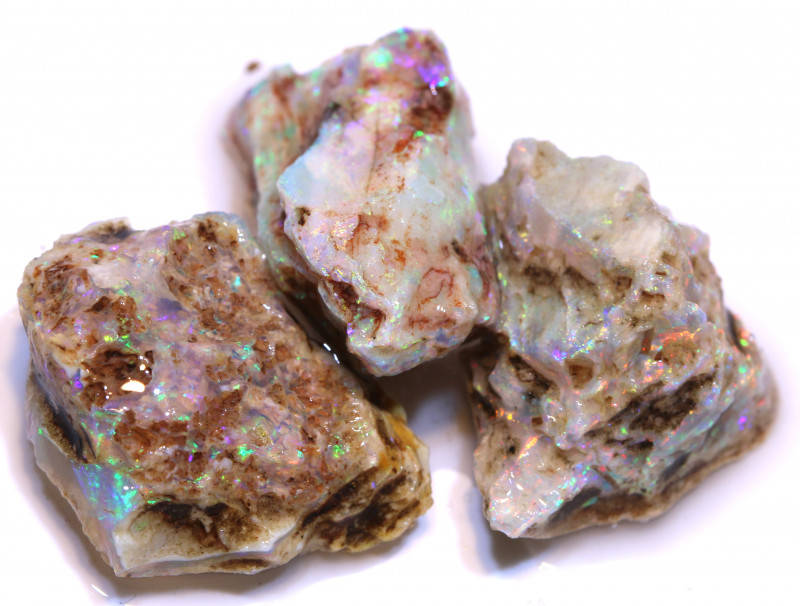
蛋白石化石
就像果冻模具一样,二氧化硅溶液会填充岩石中留下的化石印痕,并硬化成蛋白石化石!这些蛋白石可以形成于动物头骨、贝壳、菠萝,甚至是一亿年前的鱿鱼化石中,这种鱿鱼化石被称为蛋白石箭石。虽然蛋白石化石主要产于澳大利亚,但矿工们也在美国、匈牙利和印度尼西亚发现了它们。
最贵的蛋白石是什么?信不信由你,是一块蛋白石化石! “处女彩虹”蛋白石价值超过100万美元,是世界上最贵的蛋白石之一,甚至可能是最贵的。它实际上是已灭绝的头足类动物箭石(Belemnitida)的蛋白石化石。
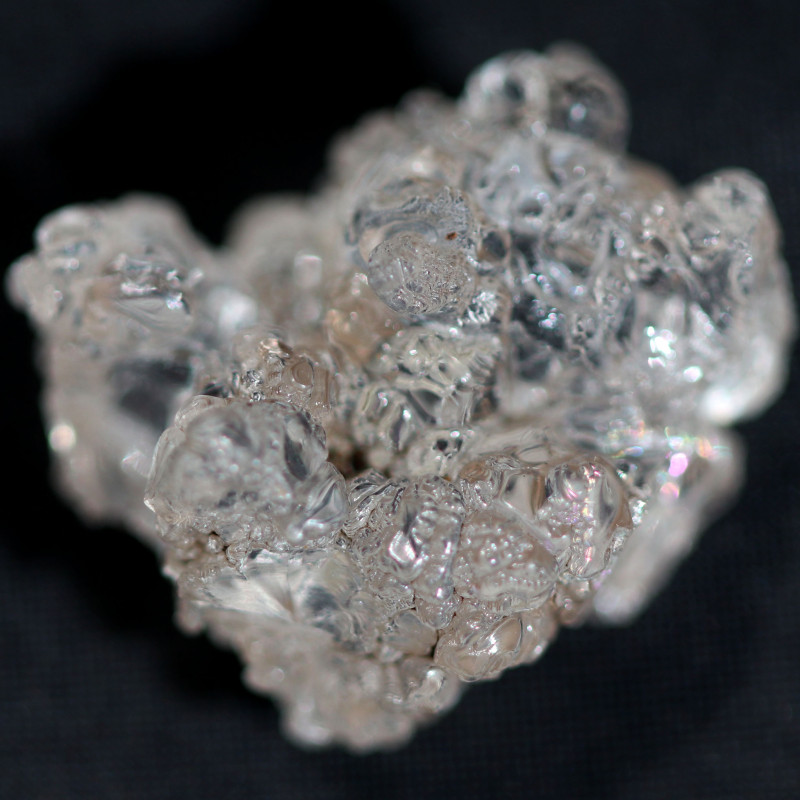
透明质酸
透明蛋白石是一种独特的蛋白石,称为AN蛋白石,它是一种无定形蛋白石,具有类似玻璃的网状结构。这种无色、淡黄色或淡绿色的普通蛋白石不含二氧化硅球体,除非含有内含物,否则不会呈现变彩效应。
透明铝石最显著的特征是其铀含量导致的绿色荧光。这种强烈的荧光在紫外光或阳光直射下会显现出来。
合成蛋白石
“合成”、“仿制品”和“仿制品”这些词可能会让买家感到困惑。它们都指的是人造蛋白石,但仿制品蛋白石与天然蛋白石具有相同的化学成分,而仿制品蛋白石只是外观相似。
在宝石学术语中,“合成”严格来说是指仿制蛋白石。但合成蛋白石是个例外,它是一种人造的乳白色玻璃树脂。
最常见的合成蛋白石是黑色或白色蛋白石,但已经出现了各种各样的仿制品和假冒品种:
纯银蛋白石(君主蛋白石) :2016 年推出的合成蛋白石,有各种颜色和黑色线性图案,类似于蛋白石的内含物。
极光蛋白石:一种由二氧化硅和树脂组成的部分合成蛋白石,有七种体色,并呈现出独一无二的漩涡图案。
龙息蛋白石:仿蛋白石,具有乳光但没有变彩效应,由捷克斯洛伐克玻璃制成,外观呈红宝石红色,但转动时会变成蓝色和紫色色调。

哪种蛋白石最符合你的喜好?
以上涵盖了所有蛋白石类型!现在您已经了解了所有蛋白石的类型和含义,您最喜欢哪一种呢?如果您难以抉择,不妨探索数百种蛋白石品种,找到最适合您的那一种!
今天就来发现你最喜欢的蛋白石类型吧!
搜索Opal Encyclopedia
最新的文章
文章分类
All there is to know about Opals including Black Opals, Ethiopian Opals & Boulder Opal
14文章数
Check out our fascinating information and articles on all things amazing in the Opal world
41文章数




